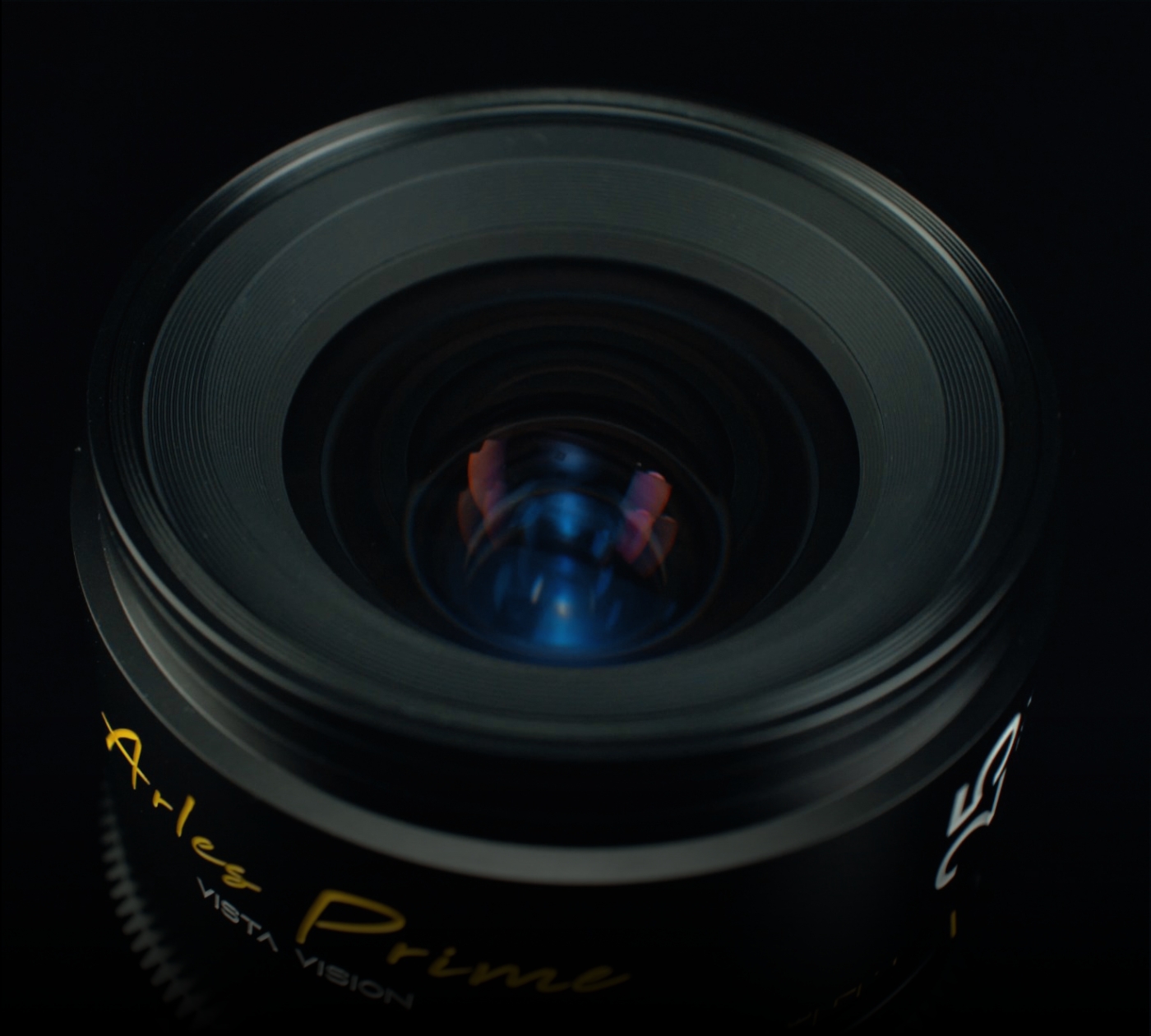Choosing the right lens is one of the most important decisions a filmmaker can make. Every detail—from optical construction to material choice—significantly influences the final image. In this article, we will explore the technical nuances of the Arles Prime Lens Series by DZOFILM and explain why this series is a compelling choice for professional filmmakers.
In-depth Look at the Optical Construction
A high-quality cinema lens is characterized by its optical precision. The Arles Prime series uses a combination of modern technologies and traditional manufacturing methods to deliver exceptional image quality. The optical construction comprises several key aspects:
Aspherical Elements and Spherical Aberration:
The use of aspherical lens elements reduces spherical aberration, which often causes blurriness and distortions at the edge of the image. This ensures uniform sharpness from the center to the edges. Compared to conventional spherical lenses, which show weaknesses at large apertures, the Arles Prime lenses offer impressive clarity, even at wide-open aperture.

Low Dispersion Glass and Chromatic Aberrations:
The use of ED glass (Extra-low Dispersion) in the lens construction minimizes chromatic aberrations, which occur when different light colors are refracted to varying degrees, causing color fringing around high-contrast areas. Especially with high-resolution camera systems like 4K or 8K, the superiority of the Arles Prime series becomes evident, as the edges remain sharp and color-neutral.
Internal Focusing and Focus Breathing:
The Arles Prime lenses feature an internal focusing system that minimizes focus breathing. This feature is particularly important in film productions, as it ensures that the framing remains consistent even during dynamic focusing. In contrast, many traditional cinema lenses suffer from noticeable focus breathing, which can be distracting in professional settings.
Nano-Coatings and Light Transmission:
The lenses in the Arles Prime series are equipped with multi-layer nano-coatings that reduce reflections and increase light transmission. As a result, unwanted lens flares and ghosting—especially during backlit shots—are minimized. This technology ensures high-contrast images with natural color reproduction, reducing the need for post-processing.
Precise Aperture Control and Light Transmission
The aperture design of a lens not only affects the amount of light hitting the sensor but also the shape and quality of the blurred areas in the image, known as bokeh.

16-Blade Iris for Smooth Bokeh:
The Arles Prime lenses feature an 16-blade iris, creating a nearly circular aperture. This results in smooth and even bokeh, particularly in portrait and close-up shots, providing an attractive background blur. Compared to lenses with only seven or eight blades, the 11-blade aperture delivers a significantly more aesthetically pleasing rendition of out-of-focus highlights.
High T1.4 Aperture:
The Arles Prime series offers a high T1.4 aperture for many focal lengths, but aperture values vary for certain lenses. The 14mm lens has a T1.9 aperture, the 135mm has a T1.8 aperture, and the 180mm lens has a T2.4 aperture. These apertures still allow for detailed and low-noise images, even in challenging lighting conditions. The high aperture provides creative freedom when shaping depth of field and image impact. Particularly in productions with natural lighting or low light levels, the Arles Prime series proves superior to competing products, which often start at T1.5 or higher.
Distortion-Free Performance at Wide Angles:
Another technical feature is the minimal distortion at wide-angle focal lengths. At the 14mm focal length, which often exhibits barrel distortion, the Arles Prime lenses show only slight distortions. This feature is especially advantageous in architectural shots or scenes with many straight lines, as it ensures precise image reproduction.
Comparison with Competing Products
There are many lens series on the market that also aim for high image quality. How does the Arles Prime series compare?
ZEISS Supreme Prime:
The ZEISS Supreme Prime series is one of the leading cinema lenses in the industry and offers excellent image quality. However, it is significantly more expensive and heavier than the Arles Prime lenses. For filmmakers who value a balanced price-to-performance ratio, the Arles lenses present a very attractive alternative.
Canon Cinema Prime:
These lenses are known for their robust construction and consistent color reproduction. However, they are often limited in terms of aperture (T1.3 - T2.2).
The Arles Prime series offers a T1.4 aperture for many focal lengths, though the apertures vary for some lenses. This flexibility is still a significant advantage in low-light situations.
Sigma FF High-Speed Prime:
This series also boasts high aperture and good optical performance. However, the Arles series holds an advantage with its broader focal length coverage and slightly more compact design.

Creative Possibilities and Application Scenarios
The Arles Prime lenses offer a wide range of creative possibilities that help filmmakers bring their visions to life.
Creative Depth of Field:
The T1.4 aperture of the Arles Prime series allows subjects to be isolated from the background, creating dramatic depth of field. This is particularly useful for scenes where emotions and details are highlighted. Combined with the 11-blade iris, this creates soft and aesthetically pleasing bokeh that adds depth to the image.

Dynamic Focus Pulls:
Thanks to the long rotational travel of the focus rings, precise focus pulls are possible, which are often difficult to achieve with conventional lenses. This feature is especially important in dramatic scenes or camera movements where the focus needs to be adjusted continuously to keep the subject sharp.
Versatility in Application:
With focal lengths ranging from 14mm to 180mm, the Arles Prime series covers all common use cases, from epic landscape shots to detailed close-ups. This versatility makes it an ideal choice for filmmakers who want to cover different genres without having to rely on multiple lens series.
High-Quality Technology Meets Creative Freedom
The Arles Prime series by DZOFILM combines advanced optical technologies with thoughtful design and a high T1.4 aperture. For professional filmmakers looking for a reliable and versatile lens, this series is an excellent choice. The combination of excellent image quality, flexible application possibilities, and robust construction makes the **Arles Prime lenses** an indispensable tool in modern filmmaking.
Choosing the Right Cinema Lens